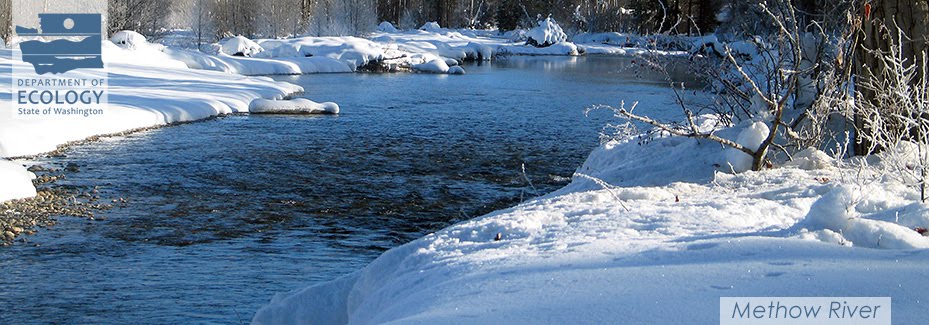The U.S. Environmental Protection Agency recently ranked Washington state as ninth worst in the nation for wood stove pollution.
For the past 20 years, Washington has had the toughest air quality standards in the nation for wood stoves, furnaces and heaters. Despite that, we still rank in the top 10 of most-polluting states.
Washington’s geography and winter weather affect pollution levels
Mountainous terrain, valleys and cold air are a perfect recipe for high levels ofharmful particulate pollution in the winter.
Normally, the air closest to the ground is warmer than the air up high. This allows air pollution like smoke, vehicle exhaust and dust to rise and disperse and pollution doesn’t reach high levels in the air we breathe.
In winter, however, sometimes these conditions are reversed—cold air below and warmer air up high. This is called an inversion. During an inversion, air pollution and smoke (particlulate pollution) become stagnant and don’t move up the air column. The polluted air is trapped close to the ground, in the air we breathe.
Wood smoke is tiny particles of ash and tar. The particles are smaller than 1 micrometer in diameter and are light enough to be carried by air currents. Single smoke particles are too small to be visible, but when there are enough, they form a cloudy haze. We inhale these fine particles deep into our respiratory system and they lodge in our lungs. This is unhealthy for everyone, but is especially harmful to infants, young children, the elderly, and people with asthma, heart or lung disease.
Inversions happen all over the state. Examples of areas more susceptible are Leavenworth and Colville, which are in narrow valleys. Other areas are less obvious, like bowl-shaped areas such as Spokane.
Why wood-smoke pollution matters
Simply put, your health is why it matters. There is no level of exposure toparticulate pollution from wood smoke that is considered safe.
Hundreds of studies show that air pollution causes serious harm, even at levels below federal safety standards.
Particulate pollution causes significant health issues each year in Washington, including:
- 1,100 premature deaths are attributed to particulate pollution - more than twice the number of deaths from automobile accidents
- 1,500 heart attacks
- 2,000 cases of acute lung disease and bronchitis
The harm to human health from this air pollutant equates to $200 million in preventable costs each year.
Keep in mind that particulate pollution is just one of the six pollutants regulated by federal air quality standards. There are hundreds of other chemicals emitted into our air that can harm health or our environment, including toxic chemicals such as mercury and benzene.
Population growth and more wood stoves
The population of our state has more than doubled since 1970. Along with thepopulation increase has come higher numbers of homes heated with wood, and cleaner burning devices are needed.
EPA’s new wood stove standards go into effect in May 2015 and there will be more stringent standards in 2020. These standards reduce the maximum amount of fine particulate pollution allowed for new stoves.
Washington’s Clean Air Act standards already meet EPA’s new 2015 standard, but not the lower 2020 levels. Moving to the 2020 standards will help improve pollution levels in Washington, giving us all healthier air to breathe.
Air monitoring and forecasting
Forecasters watch weather and air quality models closely to identify areas with weather and pollution patterns that will cause air quality to reach unacceptable levels.
Air monitors placed throughout the state provide valuable data about air pollution. Through air monitoring and weather modeling, forecasters are able to identify communities that will experience air pollution problems during inversions, wildfires or other times. If a community has an air pollution problem, a burn ban may be put in place to help keep air pollution at acceptable levels.
Outreach and education
In addition to monitoring and forecasting, another important component to managing air pollution is outreach and education. Ecology coordinates with local air agencies to implement wood smoke reduction programs.In 2013-15, Ecology awarded $4 million in grant money to seven communities that are vulnerable to violating national air pollution standards for fine particles. These grants focus on replacing old stoves in low-income households that burn a lot of wood for heat or other purposes.
Despite the success of grants and recycling programs, Ecology estimates that there are more than 200,000 old, high-polluting stoves still in use in the state.





2 comments:
We applaud your efforts to reduce wood smoke - and all forms of air pollution. I know some of your staff and know them to be hardworking, smart and committed. But we also ask that you don't show electric heat to have zero emissions, as your chart suggests. The only reason our country has mustered the support for wind and solar is because we recognize the electricity does not produce zero emissions. Showing zero emissions is a form of NIMBYism - not caring about impacts on others, whether they be in the coal producing Appalachia or the Nigerian oil fields where the environmental and human rights are ignored. Keep up the good work - but please, change that chart! John Ackerly
John you know full well that chart is reflecting emissions in a localized area. If it were not then it would also have to account for all the externalized pollution caused by manufacturing stoves cutting firewood etc.
Post a Comment